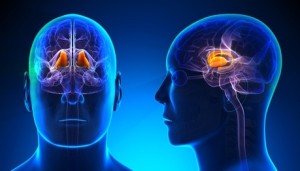 The human brain is made of an elaborate network of interlinked regions that communicate through strategic hubs. Several studies have shown that disturbances of the structural and functional connectivity profile provided by brain hubs are often linked to neuropathologies.
The human brain is made of an elaborate network of interlinked regions that communicate through strategic hubs. Several studies have shown that disturbances of the structural and functional connectivity profile provided by brain hubs are often linked to neuropathologies.
The thalamus has been described in the literature as the gateway to subcortical neural connections, as it passes information on to the cerebral cortex from the periphery or other parts of the central nervous system. In a recent study from the School of Medicine Fremantle, Australia, scientists sought insight into the involvement of this crucial hub in the progression of neurodegenerative diseases like Alzheimer’s and Parkinson’s disease.
Shape and volume of the thalamus can be visualized and measured in vivo through a wide range of imaging modalities that can detect changes in morphology (MRI), white matter neural tracts (DTI), and functional activity (fMRI). These advanced image analysis methods can provide valuable information that may be used as potential biomarkers in the detection and progression of the disease state being investigated.
Precise thalamic boundary definition is one of the most ambitious challenges encountered when performing morphological analysis of the thalamus. The team from Australia tackled this difficulty and recently published a protocol for manual segmentation of the thalamus from T1 weighted images using Analyze software.
This advanced neuroimaging protocol will pave the way for the future, leading to more accurate automated segmentation techniques. Being able to distinguish patterns of altered thalamic morphology will allow researchers to identify neuroimaging biomarkers that can be utilized for the characterization of different conditions. Also, the contribution of multimodal imaging techniques will be used to follow onset, progression, and response to treatments.
Understanding the crucial role of the thalamus and how its shape and size correlate with clinical features will lead to improvements in research that gravitate around neurodegenerative disorders.
Download our Guide to Thalamus Segmentation
and Volume Measurement
 AnalyzeDirect
AnalyzeDirect